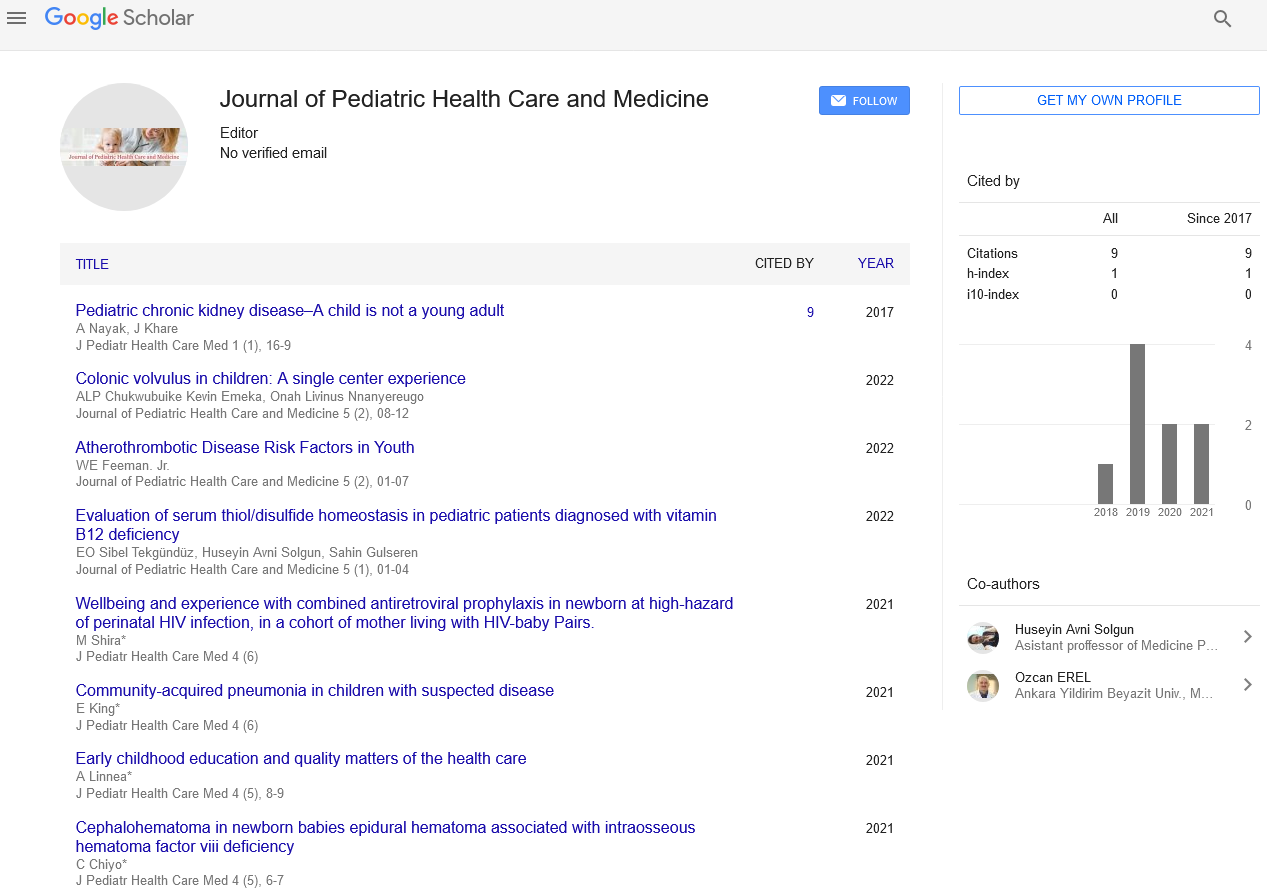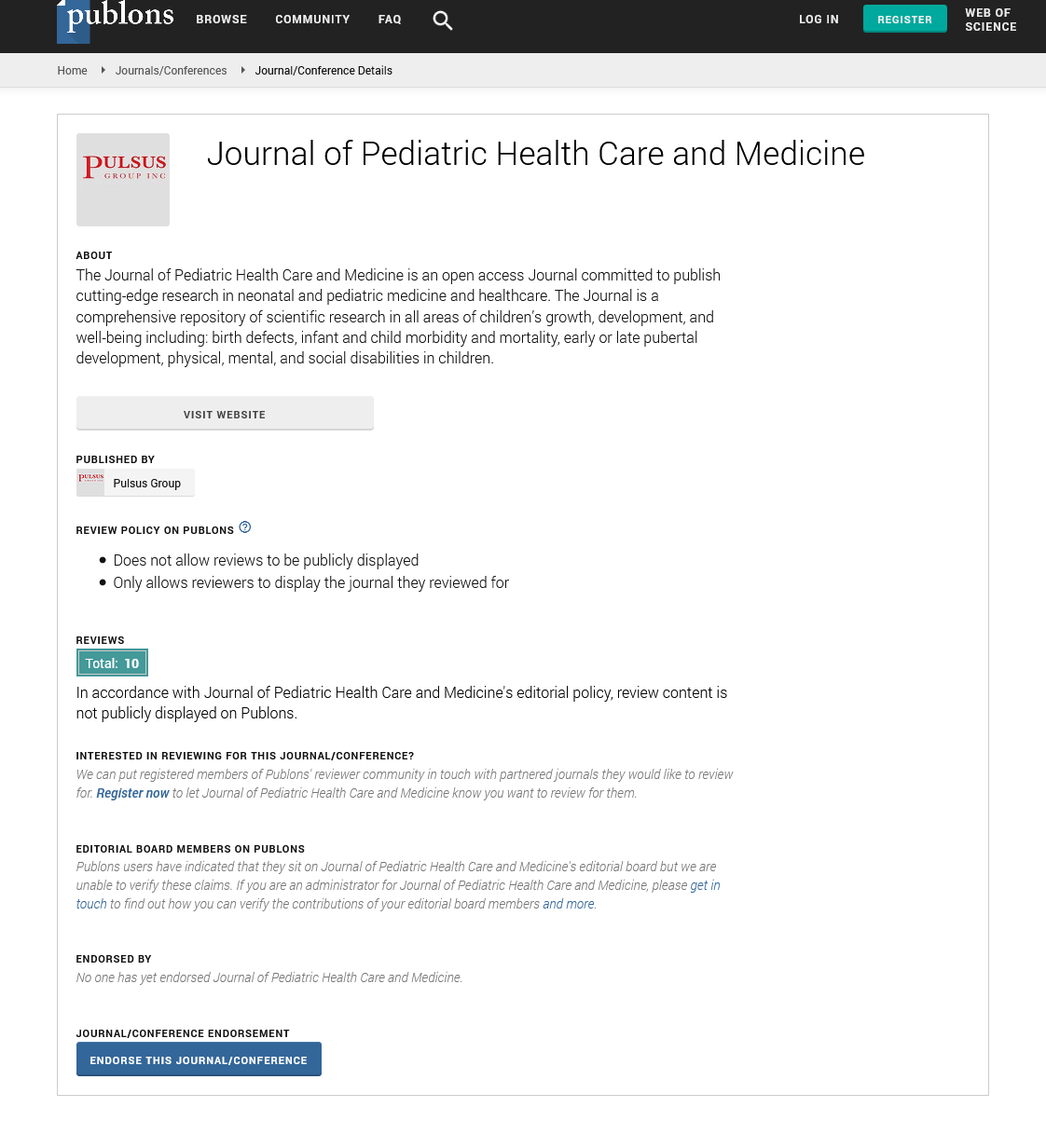Knowledge of neonatal danger signs and associated factors among mother's in Meicha District, Northwest Ethiopia
Received: 12-Feb-2021 Accepted Date: Mar 01, 2021; Published: 08-Mar-2021
Citation: None
This open-access article is distributed under the terms of the Creative Commons Attribution Non-Commercial License (CC BY-NC) (http://creativecommons.org/licenses/by-nc/4.0/), which permits reuse, distribution and reproduction of the article, provided that the original work is properly cited and the reuse is restricted to noncommercial purposes. For commercial reuse, contact reprints@pulsus.com
Abstract
Serious symptoms are not unique at birth and may be a manifestation of any new born disease. Early recognition of these symptoms for mothers is a prerequisite for increasing the quality of childbirth care. There four this study aimed to assess knowledge of neonatal danger signs and associated factors among mothers who gave birth at home and health facility in Meicha District, Northwest Ethiopia.
Introduction
Pediatric heart failure is an uncommon clinical situation and significantly affects both families and clinical consideration groups. Flow proof based revival proposals and examination are centered around interceding in the pre–heart failure period of basic disease, on account of the one of a kind causes that happen in the pediatric populace.
Information on the anatomic and physiologic contrasts across the pediatric age range is basic to fruitful administration of these difficult circumstances. This article centers around the underlying appraisal of pediatric patients in the prearrest states of respiratory misery or stun, heart failure the board, treatment of exceptional conditions that lead to heart failure, post–heart failure care, and treatment of select basic reasons for heart failure in the pediatric patient
Epidemiology
The frequency of pediatric heart failure follows a bimodal dispersion, with the first top in earliest stages (2.1 cases per 100,000 man years) and the second top in preadulthood (1.44 cases per 100,000 man years).1 Mortality for out-of-clinic heart failure (OHCA) in the pediatric populace is 90% or more prominent and likely mirrors the contrasts in pathologic condition contrasted with grown-ups that lead with the capture
Cause
As opposed to grown-ups, whereby heart failure is commonly because of an essential arrhythmia, pediatric patients all the more ordinarily experience a respiratory occasion that prompts hypoxia, acidosis, bradycardia, and capture.
Aspiratory reasons for respiratory decompensation that may prompt heart failure are various and incorporate procured conditions (eg, bronchiolitis, pertussis, sepsis, pneumonia, hypoventilation from seizures/status epilepticus) and respiratory disappointment attributable to ingested poisons or nonaccidental injury. On account of the recurrence of respiratory reasons for pediatric heart failure, rules from the American Heart Association (AHA) and the Pediatric Life Support Task Force of the International Liaison Committee on Resuscitation (ILCOR) keep on accentuating backing of oxygenation and ventilation
Initial Assessment
The objective of the underlying evaluation of a fundamentally sick youngster is to rapidly distinguish lifethreatening respiratory disappointment and stun to forestall the beginning of heart failure. Current AHA Guidelines for Cardiopulmonary Resuscitation and Emergency Cardiovascular Care prescribe a precise way to deal with evaluating the evil or harmed youngster utilizing the Pediatric Advanced Life Support (PALS) algorithm.7
This efficient approach comprises of the underlying feeling, essential evaluation, and auxiliary evaluation. On the off chance that heart failure is distinguished anytime during this underlying appraisal, quickly start cardiopulmonary revival (CPR) with great chest compressions and continue with the Pediatric Cardiac Arrest Algorithm.8 Chest compressions in youngsters ought to happen at a pace of 100 to 120 every moment, pack at any rate 33% of the front back chest width, and interferences ought to be kept away from.
Conclusion
Pediatric heart failure is most normally brought about by an underlying respiratory affront that advances to cardiovascular breakdown as hypoventilation and hypoxia lead to acidosis. Albeit moderately uncommon, it is joined by a serious level of pressure for guardians due to the heap of conditions that should be considered just as the novel life systems and physiology of pediatric patients.
REFERENCES
- 1. Bondy J, Berman S. Glazner J, Lezotte D. Direct expenditures related to otitis media diagnosis: Extrapolations from a pediatric Medicaid cohort. Pediatrics 2000;105:72-9.
- 2. Auinger P, Lanphear BP, Kalkwarf HK, Mansour ME. Trends in otitis media among children in the United States. Pediatrics 2003;112:514- 20.
- 3. Teele DW, Klein JO, Rosner B. Epidemiology of otitis media during the fi rst seven years of life in children in greater Boston: A prospective, cohort study. J Infect Dis 1989;160:83-94.






